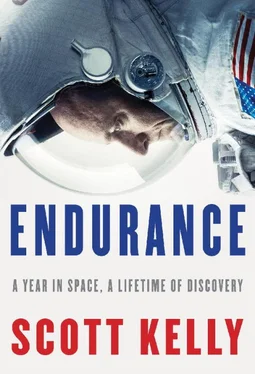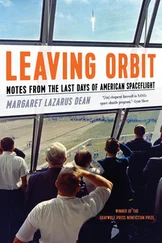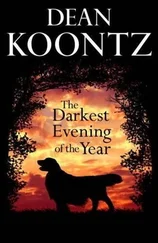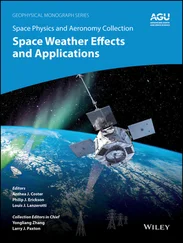Even though I held my own, the next morning was rough when I had to get up very early for a four-hour ride on a bumpy road in a bus smelling of burning engine oil. I lay down on the backseat and tried to sleep as we headed to Russa, the remote village where space flyers trained in case the Soyuz landed in cold weather. The plan was for me to first observe, then to participate in, the Russian winter survival training.
During the reign of Ivan the Terrible, Russa had been a thriving city, but now, having been largely destroyed in World War II, there wasn’t much there aside from a “sanatorium,” a quintessentially Russian combination of hospital and hotel that to Americans looked more like an old spa. The area is famous for spring-fed lakes that were supposed to have healing powers.
Unbeknownst to me, and against NASA’s objections, I was to go through the same psychological evaluations the cosmonauts did, and this was the first order of business on my first day. NASA had its own psychological evaluation process, of course, but the Russians’ was a bit different. The first test I did involved sitting across from a psychologist under a bare bulb, both of us sitting on hard wooden kitchen chairs. I felt as though I were going to be interrogated like Francis Gary Powers during the Cold War.
The psychologist, who looked like a well-fed version of Sigmund Freud, explained the test: I was to estimate various lengths of time by stopping a stopwatch without looking at it after what I thought was ten seconds, then thirty seconds, then one minute. I took the stopwatch from him and held it down by my side to begin the first test. I soon realized that I could see the doctor’s watch from where I was sitting, including the second hand. I “estimated” each of the intervals of time perfectly. The psychologist reacted with shock and congratulated me profusely on my time-estimation prowess.
Once the test was over, his watch was no longer visible to me, and I wondered whether that had actually been a test of my honesty, or perhaps a test of my ability to adapt. I decided not to worry about it much—to me, using any available tool I had to excel on the test was at least as important as following the rules blindly. I don’t condone cheating, but I’ve learned it’s important to be creative in solving problems. Now that I’ve gotten to know the Russian culture, I think my approach was the right one.
After spending a few days sharing a dank room with a NASA flight surgeon who was monitoring the training of the previous crew, I joined American astronaut Doug Wheelock and cosmonaut Dmitri Kondratyev as a three-man crew. I didn’t know yet that I would wind up flying in space with both of them much later in my career. Doug was an Army officer and helicopter pilot, even-tempered and easy to get along with. Dima was a fighter pilot who had flown the MiG-29, one of the people I might have wound up in air-to-air combat with at an earlier stage in our lives. In fact, years later we figured out that we were once stationed on opposite lines of the Soviet border in Scandinavia, him protecting the Russian Bear bombers and me in the F-14 Tomcat protecting the carrier battle group.
The survival training was grueling. We were sent out to a field with a used Soyuz capsule to simulate a remote landing, equipped with nothing but the emergency supplies carried in the spacecraft. Dima didn’t speak much English, and neither Doug nor I spoke great Russian, but the three of us communicated well enough to get through the training. We built shelters, made a fire, and tried to keep from freezing to death while we awaited “rescue.” It was so cold the first night we were unable to sleep, so we stood in front of the fire, slowly rotating in order to keep any side from getting too cold. In an uncharacteristic act for a Russian, Dima broke with protocol and at five a.m. announced we would build a teepee in order to stay warm. Cutting down trees with a machete in the freezing dark winter night was miserable, but by seven a.m. we had our shelter assembled out of birch limbs and the Soyuz parachute. We were now able to keep warm, though the teepee quickly filled with smoke. We kept our heads as low as possible so we could breathe as we slept.
On the last day, we hiked through the woods, a navigation exercise to simulate meeting up with rescue forces. The landscape was stunning, with stands of birch trees stark against the sky, everything covered with a fresh layer of fluffy snow, the new flakes sparkling in the morning light. We emerged from the forest onto a large frozen lake that was steaming in the subzero temperatures, dotted with old Russian men sitting on their pails, ice fishing. This image struck me as serene and quintessentially Russian. Seemingly frozen in time, like an epic scene from the film Dr. Zhivago, it was a moving sight that will be etched in my memory forever.
—
IN MAY I moved to Russia to start my position as DOR. It was a big transition. NASA and Roscosmos were in the process of figuring out how to train international crews together to work on an international space station, a huge undertaking with a lot of potential for power struggles, cultural conflicts, and temper tantrums from big egos on both sides. But I liked the job in Star City and found it easy to settle in. I lived on the eighth floor of one of the cinder-block Soviet apartment buildings, and each day I walked the path from my apartment, past Gagarin’s statue, past the town houses the U.S. astronauts lived in while training for flight, to the profilactorium (or “profi,” as we called it), the Star City cosmonaut quarantine facility where NASA had also been given offices.
I found it challenging at times navigating the issues between the Russians and Americans. We had different languages, different technology, and different ideas about the best way to fly in space. But I liked the Russians I met and took a real interest in their culture and history, building the foundation for our future collaboration on the ISS.
The first module of the International Space Station, the FGB, had been launched from Baikonur in November 1998, followed two weeks later by Node 1, the first U.S. module, which launched on space shuttle Endeavour . When the two were joined together, it was a major international accomplishment. The infant space station wasn’t ready to be permanently occupied, though, because it lacked necessary features like a life support system, a kitchen, and a toilet. It orbited empty for the next year and a half until the addition of the Russian service module, which made it habitable.
Leslie and Samantha came to join me in Russia for the summer. In late October 2000, I traveled to Baikonur for the launch of Expedition 1, the first long-duration mission to the ISS. Bill Shepherd would be launching on a Soyuz with two Russian cosmonauts, Yuri Gidzenko and Sergei Krikalev. This would be only the second time an American was traveling on a Soyuz. Another three-person crew would be replacing them in March, and it was hard to believe that the station would be occupied nonstop from then on. Since I still thought of myself as a space shuttle guy, I didn’t assume I would fly a long-duration flight on station myself—I hoped to be assigned to another shuttle mission soon, as pilot again. Then if I was lucky I might fly two more space shuttle missions as commander, and that would probably be the end of my spaceflight career. Having spent a total of eight days in space, I found it impossible to imagine that I would live on the space station one day, let alone set records there.
The night before the Soyuz launch, there were celebrations and the traditional toasts and revelry. A NASA manager in town for the event had more than his limit—way more—and I spent the day taking care of him because he was too ill to be left alone. The next morning I saw Shep briefly when he was on his way to get suited up for launch.
Читать дальше












